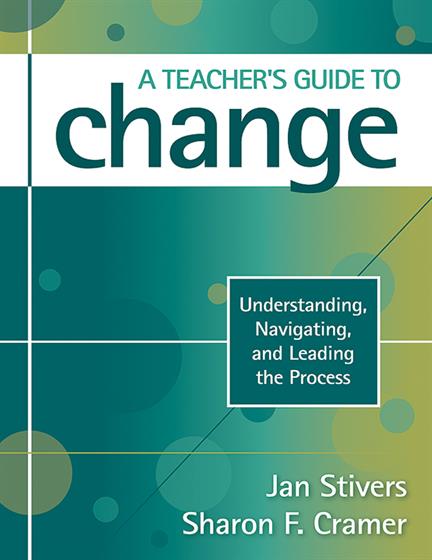Preface
Acknowledgments
About the Authors
Part I. Experiencing Change
1. Introducing the Challenges of Change for Teachers
2. What Changes? Experiencing Change at School and at Home
Changes at School
New Administration
New Teaching Positions
New Locations
New Colleagues
Professional Development
Professional Recognition
Changes in Life at Home
Illness
Loss
Changes in Relationships and Responsibilities
Parenting
Connecting Our Professional and Personal Changes to the Change That Matters Most
3. Defining the Dynamics of Change for Teachers
Voluntary or Mandated
Top-Down or Bottom-Up
Incremental or Fundamental
Part II. Understanding the Change Process
4. First Encounters With Change
Responding to Innovation
Innovations in Educational Practices
Categorizing Responsiveness to Innovation
Understanding Resistance to Change
Resistance We Should Resolve
Failure to Be Convinced
Habit
Fear of Loss
Fear of Failure
Negative Experiences
Resistance We Should Respect
Pragmatic Concerns
Philosophical Disagreements
Analyzing One Teacher's Resistance to Change
5. Charting the Stages of Change
Teachers' Concerns Evolve During the Change Process
Stages of Concern
Self Concerns
Task Concerns
Impact Concerns
Change Occurs in Phases
An Overview of the Change Process
Endings: Recognizing That a Change Is Needed
The Neutral Zone: Preparing to Change
New Beginnings: Moving Ahead With Change
Part III. Implementing Change
6. Using Personal Experiences to Prepare for Professional Changes
Drawing on Personal Experiences
Four Steps for Starting a Professional Change Initiative
Step One: Identify Aspirations
Step Two: Inventory Resources
Step Three: Link Aspirations and Resources
Step Four: Anticipate Obstacles
7. Teacher-Directed Change: Working Within the Classroom
Implementing, Evaluating, and Celebrating Self-Directed Change
Step One: Aim High But Start Small
Step Two: Build a Timeline
Step Three: Monitor Both Progress and Outlook
Step Four: Celebrate Small Victories
Step Five: Shift Strategies to Make Adjustments
Step Six: Sustain Commitment
Part IV. Leading Change
8. Teacher-Led Change: Expanding Beyond the Classroom
Characteristics of Change Leaders
Spheres of Influence
Curriculum Development
Cocurricular and Extracurricular Programming
Outreach to Families and the Community
Professional Development for Teachers
Education Policy
9. Using Classroom-Based Skills to Lead Change
Part V. Changing Throughout a Career in Teaching
Inspiring Others to Accomplish Change: Mind-Set and Skills
Making Use of Teaching Skills to Lead Change
Communicate Clearly and Regularly
Motivate People to Take Risks and Accept Challenges
Be Proactive in Problem Solving
Making Use of Teaching Skills to Sustain Change
Check on Progress
Provide Continuous Assistance
Remember What Matters Most
10. Sustaining Career Vitality Through Change
The Early Years: Gaining a Sense of Ourselves as Teachers
The Middle Years: Making the Transition From Mentee to Mentor
The Later Years: Expanding Our Roles
Looking to the Future
Appendix A. Survey Items and Responses
Appendix B. Interview Questions
Appendix C. Professional Organizations for Teachers
References
Index




